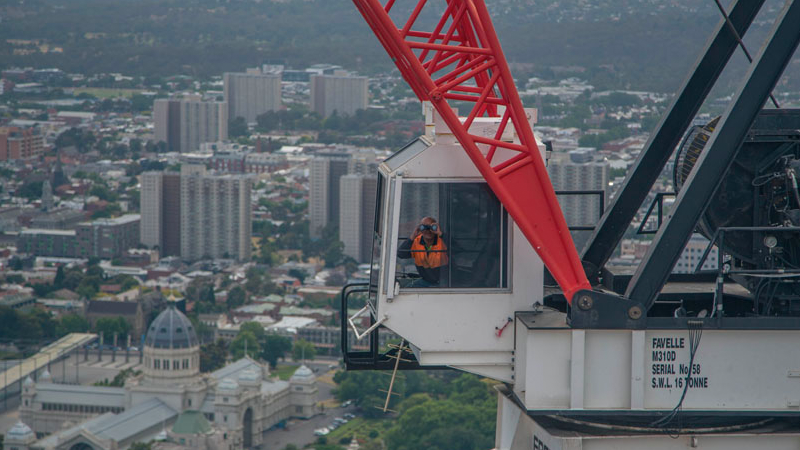Crane numbers have fallen 6 per cent across the country, as construction continues to slow in Sydney and Melbourne, with potential new projects remaining dormant due to economic uncertainty.
The overall numbers have fallen as residential developers continue to sweat on high-rise home-building, with crane erections on new projects unable to replace completed ones.
Crane numbers across all sectors fell by 45 to a total of 677, down from 722 in the first quarter, consultancy RLB’s latest crane index shows.
“While construction activity has fallen by $9.6 billion across 2020, the significant portion of the fall—nearly 90 per cent—has come from the residential sector,” RLB research director Domenic Schiafone said.
“This correlates with the fall in crane numbers where the residential crane index fell by 38 to 145, to be at its lowest level since the second quarter of 2018.”
As residential work has slowed, the non-residential sector has gained in importance.
The non-residential index recorded a small decline to 197 from 203, representing a drop in crane numbers of seven, with the health sector contributing to the small net reduction by adding 12 cranes, a surge of 66 per cent, across the country.

In Melbourne, which is enduring the longest and strictest lockdown among the capitals, the decline was overwhelmingly due to a slump in residential and retail construction, offsetting higher numbers of cranes on mixed-use and education projects.
Far East Consortium’s second stage of its West Side Place development saw the largest individual increase of cranes in the region, lifting by three cranes to now total four.
“While most sites have continued to operate through stage four, others have frozen or stopped work given the limit to resources is not viable and they are better off to sit the lockdown out,” Schiafone said.
“The extent of what this means from a cost, programme perspective, is not exactly known at this stage.
“However, as restrictions are eased over the next month we will get a clearer indication given we expect to see claims coming through the system.”
Sydney recorded a softer fall in crane numbers, with 120 cranes removed throughout Sydney, and 118 new additions over the first half of the year.
Sydney’s commercial sector cranes increased to 36, an increase of four cranes across developments in Alexandria, Beverley Park, Kogarah, Lane Cove West and St Leonards.

Cranes on residential and civil construction projects made up the majority of removed cranes across the city.
Across Sydney’s five main regions, all regions, except for western Sydney, experienced a decrease in crane numbers, with Parramatta recording an increase of eight cranes.
Brisbane experienced a decrease of eight cranes, the lowest index recorded index figure, down from a high of 142 in the second quarter of 2016.
Brisbane’s civil sector experienced the largest decrease in cranes, losing eight cranes at the Cross River Rail project at Roma Street, Albert Street and Woolloongabba as well as the Riverwalk in Milton.
RLB said the ten cranes assisting the development at The Star Entertainment Group’s $3.6 billion Queens Wharf casino development now represented 20 per cent of all cranes in Brisbane.
Canberra’s crane numbers remained steady at 540, slightly down from the high of 560 recorded a the beginning of last year, supported by new education and mixed-use construction projects.
Crane numbers also declined in Adelaide, the Central Coast, Wollongong, Newcastle and Perth.
Defying the nationwide slump, both the Gold Coast and Sunshine Coast saw lifts in crane numbers.
Residential sector cranes accounted for 82 per cent of all Gold Coast cranes, while 13 out of the 15 new cranes erected in the Sunshine Coast are also for apartment projects at the Curve, Botanica, Driftwood, Essence and Plantation developments.













